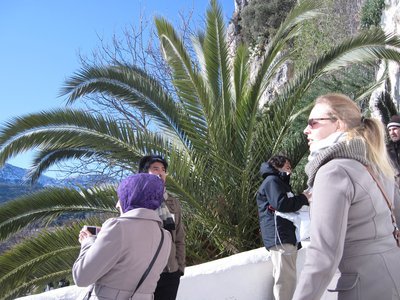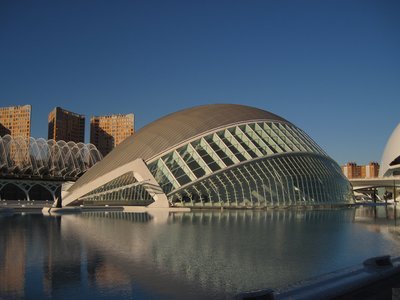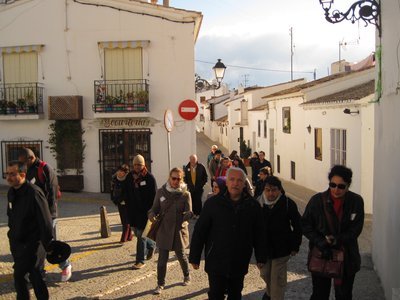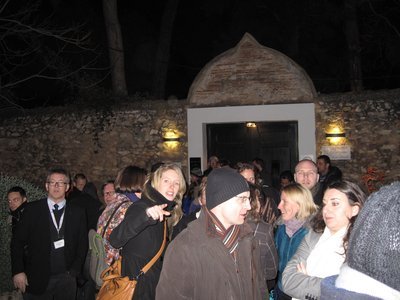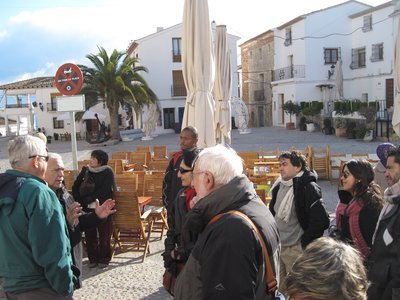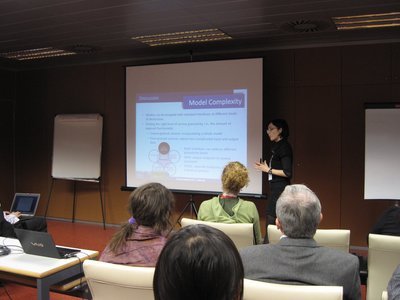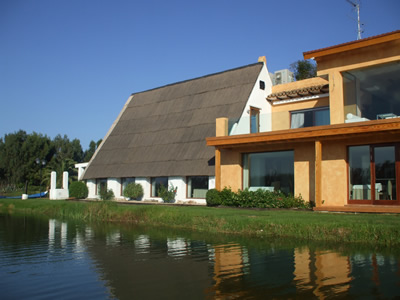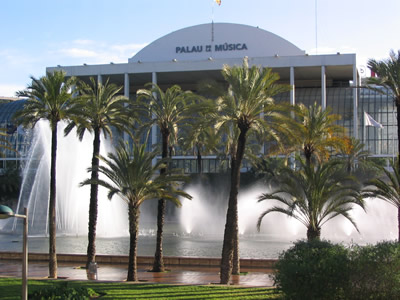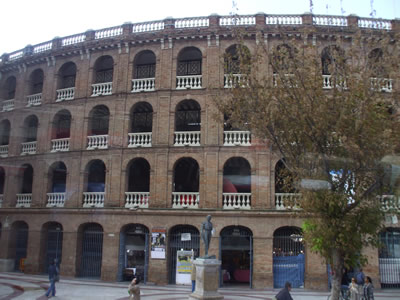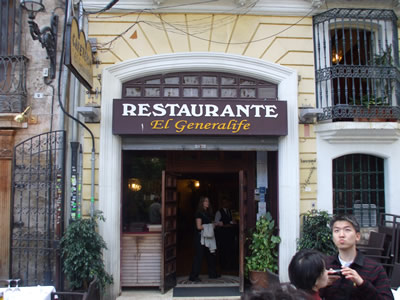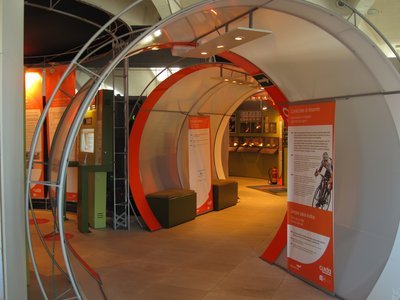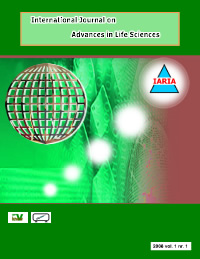The Thirteenth International Conference on Bioinformatics, Biocomputational Systems and Biotechnologies
BIOTECHNO 2021
May 30, 2021 to June 03, 2021 - Valencia, Spain
Deadlines
Submission | Mar 23, 2021 |
Notification | Apr 15, 2021 |
Registration | Apr 26, 2021 |
Camera ready | May 01, 2021 |
Deadlines differ for special tracks. Please consult the conference home page for special tracks Call for Papers (if any).
BIOTECHNO 2021 - The Thirteenth International Conference on Bioinformatics, Biocomputational Systems and Biotechnologies
May 30, 2021 - June 03, 2021
BIOTECHNO 2021
Onsite and Online Options: In order to accommodate a large number of situations, we are offering the option for either physical presence or virtual participation (pdf slides or pre-recorded videos).
ISSN: 2308-4383
ISBN: 978-1-61208-859-4
BIOTECHNO 2021 is colocated with the following events as part of InfoSys 2021 Congress:
- ICNS 2021, The Seventeenth International Conference on Networking and Services
- ICAS 2021, The Seventeenth International Conference on Autonomic and Autonomous Systems
- ENERGY 2021, The Eleventh International Conference on Smart Grids, Green Communications and IT Energy-aware Technologies
- WEB 2021, The Ninth International Conference on Building and Exploring Web Based Environments
- DBKDA 2021, The Thirteenth International Conference on Advances in Databases, Knowledge, and Data Applications
- SIGNAL 2021, The Sixth International Conference on Advances in Signal, Image and Video Processing
- BIOTECHNO 2021, The Thirteenth International Conference on Bioinformatics, Biocomputational Systems and Biotechnologies
BIOTECHNO 2021 Steering Committee
| |
 |
Birgit Gersbeck-Schierholz
Leibniz Universität Hannover
Germany
|
|
 |
Hesham H. Ali
University of Nebraska at Omaha
USA
|
BIOTECHNO 2021 conference tracks:
A. Bioinformatics, chemoinformatics, neuroinformatics and applications
- Bioinformatics (Bioinformatics modeling; Bioinformatics databases; Epidemic models; Informatics and statistics in bio-pharmaceutical research; Machine learning and artificial intelligence in molecular design; Systems biology and metabolic networks; Medical informatics; Genomics informatics; Biostatistics; Structural and functional genomics; Identifying molecular sequence and structure databases; Mechanisms for specifying molecular interactions and structure predictions; Formalisms for gene regulation and expression databases; Algorithms for gene identification and pattern discovery; Techniques for gene expression analysis; Modeling and simulation of biomarkers)
- Advanced biocomputation technologies (Stochastic modeling; Computational drug discovery; Graph theory and bioinformatics; Biological databases and information retrieval; Experimental studies and results; Application of computational intelligence in medicine and biological sciences (artificial neural networks, fuzzy logic, evolutionary computing, and simulated annealing); High-performance computing as applied to natural and medical sciences; Hardware computing accelerators; Computer-based medical systems (automation in medicine, etc.); Other aspects and applications relating to technological advancements in medicine and biological sciences; Novel applications)
- Chemoinformatics (Computer-aided drug design; Concepts, methods, and tools for drug discovery; Virtual screening of chemical libraries; ADMET - absorption, distribution, metabolism, excretion, and toxicity; QSAR - quantitative structure-activity relationships; Protein-ligand docking and scoring functions; Chemical similarity and diversity; Chemogenomics in drug discovery; QSPR - quantitative structure-property relationships; Theoretical models in chemical reactivity; Mathematical chemistry and chemical graphs; In silico environmental toxicology; Computer-assisted chemical engineering; Combinatorial chemistry; Graph theory in chemistry; Prediction of drug toxicity; Property prediction; Molecular mechanics and quantum chemical calculations; Modeling and measurements of solid-liquid and vapor-liquid equilibria; Blood-brain barrier penetration; Comparison of the similarity(diversity of chemo-data libraries; Chemoinformatics applications)
- Bioimaging ( Image processing in medicine and biological sciences; Measurements techniques; Mass spectrometry; Numerical(mathematical approaches; Biological data integration and visualization)
- Neuroinformatics (Neurosciences; Neurocomputing)
B. Computational systems (genetics, biology, and microbiology)
- Bio-ontologies and semantics (Software environments for bio-computation, bio-informatics, and biomedical applications; Medical informatics; Epidemic models; Biological data mining; Biomedical knowledge discovery; Pattern classification and recognition; Mathematical biology; Graph theory and bio-informatics; Stochastic modeling; Biological databases and information retrieval; Processing mutation information; Archiving of mutation specific information)
- Biocomputing (Computational biology; Bioengineering; Biomedical image computing and informatics; Biomedical automation and control; Image-based diagnosis and therapy; Modeling and simulation of systems biology; Applications of large-scale bio-systems)
- Genetics (Gene regulation; Gene expression databases; Gene pattern discovery and identification; Genetic network modeling and inference; Gene expression analysis; RNA and DNA structure and sequencing; Evolution of regulatory genomic sequences; Biological data mining and knowledge discovery; Bio-pattern classification and recognition; Bio-sequence analysis and alignment; Comparative genomics; Structural and functional genomics; Amino acid sequencing)
- Molecular and Cellular Biology (Protein modeling; Molecular interactions; Metabolic modeling and pathways; Evolution and phylogenetics; Macromolecular structure prediction; Proteomics; Protein folding and fold recognition; Molecular sequence and structure databases; Molecular dynamics and simulation; Molecular sequence classification, alignment and assembly)
- Microbiology (Bio-nanotechnologies; Self-assembly and self-replication; Global regulatory networks and mechanisms; Microbial propagation and immunity; Microbial therapies; Microbial life under extreme energy limitation; Cellular microbiology and contact systems; Phylogenetics; Genome dynamics; Transmission dynamics and evolution of emerging diseases; Metagenomics and drug resistance; Microbes and alternative energies)
C. Biotechnologies and biomanufacturing
- Fundamentals in biotechnologies (Bioengineering; Bioelectronics; Biomaterials; Bio-films in ecology and medicine; Biometric screening techniques; Biorobotics)
- Biodevices (Biosensors; Biomechanical devices; Biochips; Biocomputing; Biometrics devices; Specialized biodevices; Nanotechnology for biosystems)
- Biomedical technologies (Biomedical engineering; Biomedical instrumentation; Biomedical metrology and certification; Biomedical sensors; Biomedical monitoring devices; Biomedical devices with embedded computers; Biomedical integrated systems)
- Biological technologies (Biological data integration; Image processing in medicine and biological sciences; Biological data visualization; Synthetic biological systems)
- Biomanufacturing (Manufacturing platforms; Biopharmaceutical industry; Generic biopharmaceuticals; Bioprocess management; Clinical trials; Disposables and product changeover; Upstream and downstream bioprocessing; Technology benchmarks; International regulations)
D. Bionature
- Bioenvironment (Climate; Hydrology; Wind science; Cryosphere; Public health; Economics; Responsibility)
- Biodiversity and invasion control (Marine & oceanic bio-technologies; Oceanic bio-diversity; Arctic and Antarctic bio-pulse; Forest landscape; Bioinvasion)
- Renewable and sustainable energies (Energy sustainability; Energy bioscience; Eolian energy; Photovoltaic solar energy; Biomass energy; Green energy technologies and economic models)
Deadlines:
Submission | Mar 23, 2021 |
Notification | Apr 15, 2021 |
Registration | Apr 26, 2021 |
Camera ready | May 01, 2021 |
Deadlines differ for special tracks. Please consult the conference home page for special tracks Call for Papers (if any).
Technical Co-Sponsors and Logistic Supporters



